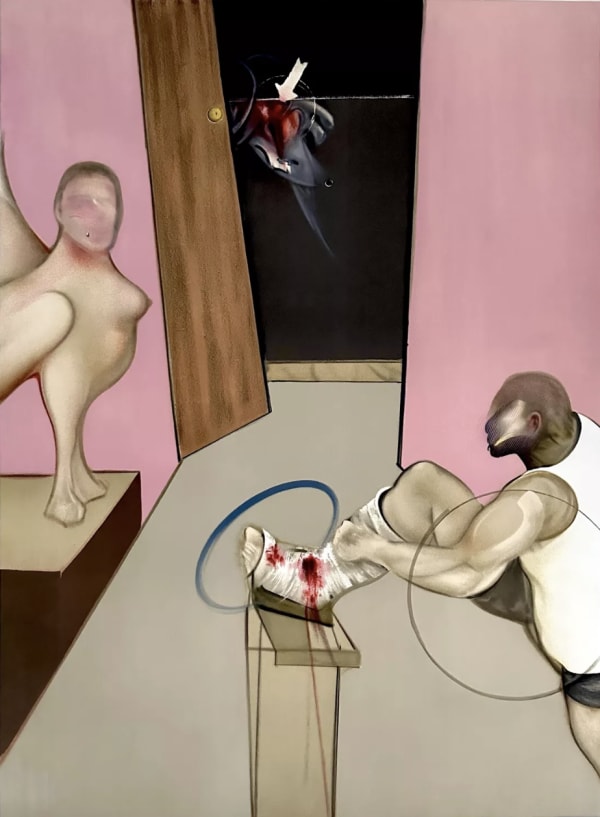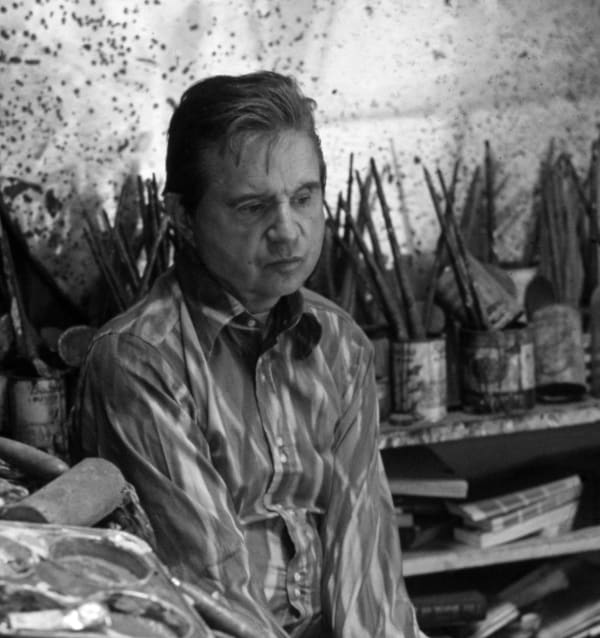-

Crucifixion, 1933
Oil on canvas, 62 x 48.5cm
©The Estate of Francis Bacon, Image reproduced for educational purposes only.
-
It’s always hopeless to talk about painting - one never does anything but talk around it.
- Francis Bacon
The painting reimagines one of Western art’s most recognisable subjects through a modern, unsettling lens. Bacon strips away all religious context, reducing the figure of Christ to an abstracted, skeletal form suspended against a black void. The stark geometry and limited palette reveal the influence of Picasso’s biomorphic forms, yet the emotional intensity is unmistakably Bacon’s own.Crucifixion (1933) is now recognised as a landmark in his early career, foreshadowing the darker psychological and physical themes that would define his later work.



